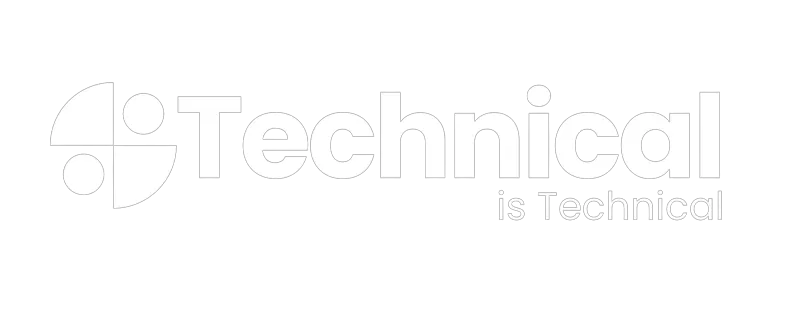In the post-COVID-19 era, technological innovation has surged forth and reshaped our digital landscape. What many rightfully see as a challenge, others, like the World Economic Forum (WEF), see as an accelerant for change. Indeed, such technologies as AI have enhanced our digital marketing outreach and digitization efforts across industries. However, despite these innovations, some common problems with otherwise tried-and-tested software solutions remain. One such example is Customer Relationship Management (CRM) software, where frequent challenges hamper innovation and optimal use. Thus, this article will explore common CRM problems and how to fix them.
Perhaps the most effective solution to CRM issues could be acquired by seeking help from CRM data entry service providers. However, let’s look at the individual problems with specific solutions to them before we discuss the merits of outsourcing.
What is CRM?
First, let us briefly define CRM. CRM is a software solution that, as the name implies, seeks to manage all aspects of businesses’ interactions with customers. As such, it offers a centralized customer database, where one can track customer information and interaction history. Moreover, most non-specialized CRM solutions also offer such features as marketing automation tools and lead analysis tools. Finally, there are three common CRM types that specialize in specific areas:
- Operational; service, sales, and marketing automation
- Analytical; profitability analysis, predictive modeling, and refined customer segmentation
- Collaborative; internal communications and channel management
Of course, the exact features and focus of each CRM solution will vary. Furthermore, given the tech trends that define the future of CRM, one can likely expect it to continue to evolve.


Common CRM problems and how to fix them
Given CRM’s demonstrable merit, it sees widespread adoption in the business world. Still, as with most software solutions, CRM is neither infallible nor monolithic. Each solution differs from the next, and each business’s goals and circumstances are different as well. Nonetheless, some problems are far more common than others, as they arise from common factors. With that in mind, let us explore the five most common CRM problems and how to fix them.
#1 Overabundance of features and high cost
Having chosen a CRM solution, many businesses may find themselves paying too much for features they don’t need.
The problem
An overabundance of features is among the most frequent criticisms of CRM software. It’s not uncommon that businesses won’t have a use for many features their solution offers while still paying for them.
The solution
This problem tends to find its preventive solution at the earliest stages. Namely, establishing S.M.A.R.T. goals in advance, including a “less is more” perspective, can help ensure less feature bloat. If a poor choice has been made, downgrading is another viable solution. Downgrading carries some negative connotations, but it doesn’t have to; optimal ROI hinges on both costs and sales, after all. Finally, opting for a more straightforward CRM solution can help ensure better adoption rates, which we’ll cover just below.
#2 Low adoption rates
One of the most pressing matters in terms of CRM use is user adoption. This is both incredibly common and notable across all industries.
The problem
CRM adoption rates are low across all industries. Nomalys notes this, echoing research by Salesforce that places adoption rates at 26%. IBM reports even lower adoption rates at 24%. Similar research by Forrester, Trovare, CSO Insights, and others, notes two crucial problems:
- Less than 40% of businesses that adopt CRM have an end-user adoption rate of 90% or more
- 22% of all CRM implementation problems are related to staff or user adoption
The solution
Unfortunately, there is no universal solution to this problem. There are, however, many steps you can consider.
Initially, many employees or departments may show reluctance due to an impractical CRM solution. As highlighted above, an overabundance of features can confuse and dismay. Thus, a clean, user-friendly CRM won’t typically discourage users. Similarly, staff may frequently be unsure of what exactly CRM offers. Here, businesses can ensure they have adequate learning sessions, onboarding processes, and a collaborative culture that encourages new assets. Finally, team managers and administrative staff can monitor staff activity to encourage adoption.
#3 Scope creep and integration
Similarly, scope creep can emerge soon after the initial adoption. Even if it is sustainable by itself, which it frequently isn’t, integration issues soon follow.
The problem
Scope creep emerges when businesses expand their scope of CRM goals. Deciding on new functionalities over time, as new goals arise, can derail the initial reasons one opted for CRM.
The solution
The solution to this problem is primarily proactive. Many CRM solutions offer integration options for third-party solutions to fit into existing and legacy assets. However, scope creep is generally not sustainable unless one is prudent. As such, gradual implementations aside, one must simply prevent it. Adherence to S.M.A.R.T. goals can ensure one’s scope remains focused, which in turn optimizes CRM utilization.
#4 Bad data and outdated records
Another common problem of CRM lies in bad, outdated, or duplicate data. Such data can both inhibit decision-making and reduce efficiency.
The problem
Any business will inevitably amass redundant, old, or otherwise unusable data. From human error during data input to customer data changing over time, this can lead to disorganization.
The solution
There are a few different solutions to this problem. Initially, proper staff training can help reduce, but not eliminate, the factor of human error. Similarly, frequent data deduplication can minimize redundant data. Finally, routine cleanups of unresponsive contacts and confirmations of data on contact with customers can both fortify your database’s accuracy.
#5 Lacking GDPR compliance and user privacy
Finally, user privacy is also a fairly common concern. This is not merely an ethical concern but also a legal one.
The problem
User privacy is a pressing concern by itself. GDPR compliance only exacerbates this issue, leaving companies unsure over their CRM use.
The solution
Ensuring customer data protection is a holistic process. First, one should ensure that customer data is safe from third parties, whether the database is on-premise or cloud-based. Next, data collection should always follow consent; email opt-in forms are a fine example. Finally, constant reevaluation of data collection practices according to GDPR and local laws can help alleviate such concerns.
Conclusion
To summarize, an overabundance of features, low adoption rates, scope creep, bad data, and user privacy are the most common CRM problems, and fixing them is a pressing concern. In many cases, the correct choice of CRM alone can help prevent them, as can consistent monitoring and reevaluation. With such problems remaining prevalent today, one cannot afford to overlook them.
Like we mentioned before, the best way to handle CRM issues is hiring a reputable CRM data entry service provider to shoulder this responsibility for you.






























